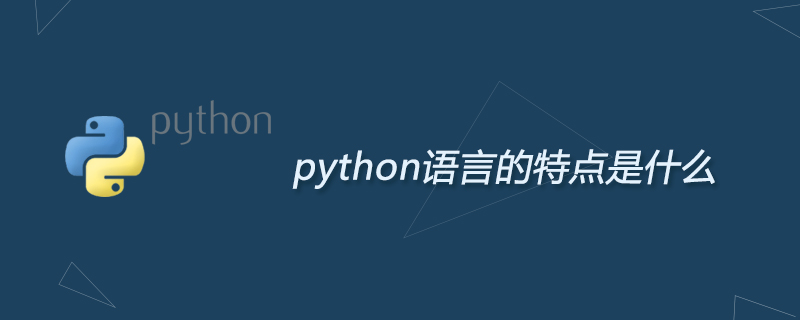

What are the characteristics of the python language?
Characteristics of python language
Simple
Python is a simple and concise language. Reading a good Python program feels like reading English, albeit very strict English. This pseudocode feature of Python is one of its greatest strengths, allowing you to focus on solving problems rather than the language itself.
Easy to learn
As you are about to see, Python is very easy to get started. As just mentioned, Python has an exceptionally simple syntax.
Free and Open Source
Python is an example of FLOSS (Free/Free and Open Source Software). Under some simple terms, you are free to distribute copies of this software, read its source code, modify it, or use parts of it in new free programs. FLOSS is based on the concept of a shared knowledge community, which is one of the reasons why Python is so great - it is created and continuously improved by a community of people who want to see a better Python.
High-Level Language
When you write programs in Python, you never need to worry about low-level details, such as how your program manages memory usage.
Portable
Based on its open source nature, Python has been ported (that is, made to work) to many platforms. As long as you are careful enough to avoid using system-specific features, all of your Python programs can run unmodified on any of these platforms.
You can run Linux, Windows, FreeBSD, Macintosh, Solaris, OS/2, Amiga, AROS, AS/400, BeOS, OS/390, z/OS, Palm OS, QNX, VMS, Psion, Python is used on Acorn RISC OS, VxWorks, PlayStation, Sharp Zaurus, Windows CE, and even PocketPC platforms.
You can even use a platform like Kivy to create games for iOS (iPhone, iPad) and Android.
Explanation
This requires some explanation.
A program written in a compiled language (such as C or C) will use a series of flags and options by the compiler to convert the source code (such as C or C) into a language (binary) that the computer can understand. codes, that is, 0 and 1). When you run a program, the linker/loader software copies the program from the hard disk to memory and then starts running it.
In other words, Python does not need to be compiled into binary code. You just run the program directly from the source code. Internally, Python converts source code into an intermediate format called bytecode, which is then translated into your computer's machine language and then runs. In fact, this all makes using Python easier, because you don't have to worry about compiling the program, ensuring that the appropriate libraries are linked and loaded, etc. This also makes your Python program more portable, since you only need to copy your Python program to another computer and then it works!
Object-oriented
Python supports both procedural and object-oriented programming. In procedural languages, programs are built around procedures or functions (which are nothing more than reusable program fragments). In object-oriented languages, programs are built around objects (combinations of data and functionality). Python has a very powerful but too concise way of performing object-oriented programming, especially compared to large languages such as C or Java.
Extensible
If you need a critical piece of code that runs very fast, or want to write some algorithms that you don’t want to open, you can use C or C to complete it That part of the program is then called from your Python program.
Embeddable
You can embed Python into a C/C program, allowing users of your program to gain "scriptability" capabilities.
Extension library
The Python standard library is indeed very large. It can help you complete many tasks, including regular expressions, document generation, unit testing, threads, databases, web browsers, CGI (Common Gateway Interface), FTP (File Transfer Protocol), email, XML (Extensible Markup Language ), XML-RPC (Remote Method Call), HTML (Hypertext Markup Language), WAV (Audio Format) files, encryption, GUI (Graphical User Interface) and other system-related codes. Remember, all of this is possible as long as Python is installed. This is called Python's "remote control" philosophy.
In addition to the standard library, there are a variety of other high-quality libraries, which you can find in the Python package index.
Related recommendations: "Python Tutorial"
The above is the detailed content of What are the characteristics of python language. For more information, please follow other related articles on the PHP Chinese website!